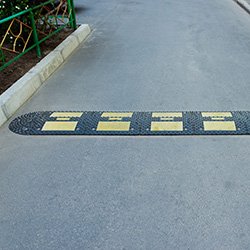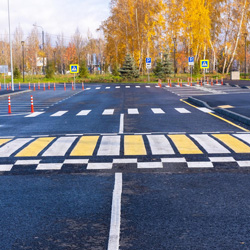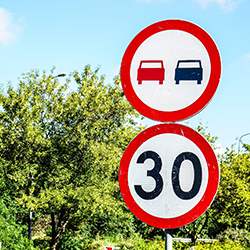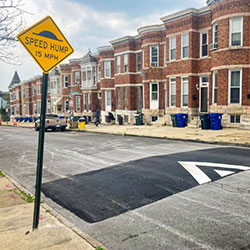Weather-resistant speed bumps are specially designed traffic management tools that are built to withstand harsh weather conditions, making them the ultimate solution for all-weather traffic control. These speed bumps are essential in various areas such as parking lots, private roads, and industrial zones where speed regulation is crucial for safety.
Designed from high-quality materials like rubber or plastic, weather-resistant speed bumps are engineered to endure constant exposure to the elements, ensuring their longevity and functionality year-round. They are resistant to cracking, fading, and warping, making them a cost-effective solution for effective traffic management in any weather condition.
Durability in Harsh Weather Conditions
Weather-resistant speed bumps are constructed using durable materials such as rubber or plastic, ensuring their ability to withstand extreme weather conditions. These materials are carefully selected for their resilience and longevity, making the speed bumps highly durable and reliable.
- Resistance to Cracking, Fading, and Warping
These speed bumps are specifically engineered to resist cracking, fading, and warping that can be caused by exposure to the elements. This ensures that they maintain their effectiveness and visibility over an extended period, even in the harshest weather conditions.
- Cost-Effectiveness in the Long Run
Due to their exceptional durability, weather-resistant speed bumps prove to be a cost-effective solution in the long run. Their ability to resist wear and tear from weather exposure means that they require minimal maintenance and replacement, saving both time and money for traffic management operations.
High Visibility for Increased Safety
Weather-resistant speed bumps are designed with bright colors and reflective strips to enhance their visibility in various lighting conditions. These features make the speed bumps easily noticeable to drivers, especially during low light or inclement weather, reducing the risk of accidents and promoting overall safety on the road.
Textured Surface for Improved Traction
The textured surface of weather-resistant speed bumps provides added traction for vehicles, enhancing grip and stability. This feature is particularly beneficial in areas with heavy traffic or a high risk of vehicles skidding, helping to prevent accidents and ensure safe driving conditions. Moreover, these speed bumps are suitable for various road surfaces including concrete, asphalt, and gravel, making them versatile for different environments.
Versatility in Size and Installation
Weather-resistant speed bumps come in a variety of sizes and shapes to cater to different needs and environments. Whether for heavy-duty use in industrial areas or for smaller parking lots and neighborhoods, there are options available to suit specific requirements. Additionally, these speed bumps are designed for easy installation on various surfaces such as concrete, asphalt, and gravel, providing a versatile solution for managing speed and traffic flow in different settings.
Conclusion
Weather-resistant speed bumps offer a multitude of benefits for effective traffic management in all weather conditions. Their durability, visibility, and traction properties make them a valuable tool in promoting road safety and reducing the risk of accidents. These speed bumps are reliable and long-lasting, capable of withstanding varying weather conditions and maintaining their functionality over time. In conclusion, weather-resistant speed bumps are an indispensable solution for enhancing road safety and managing traffic flow efficiently, ensuring a safer environment for all road users.









